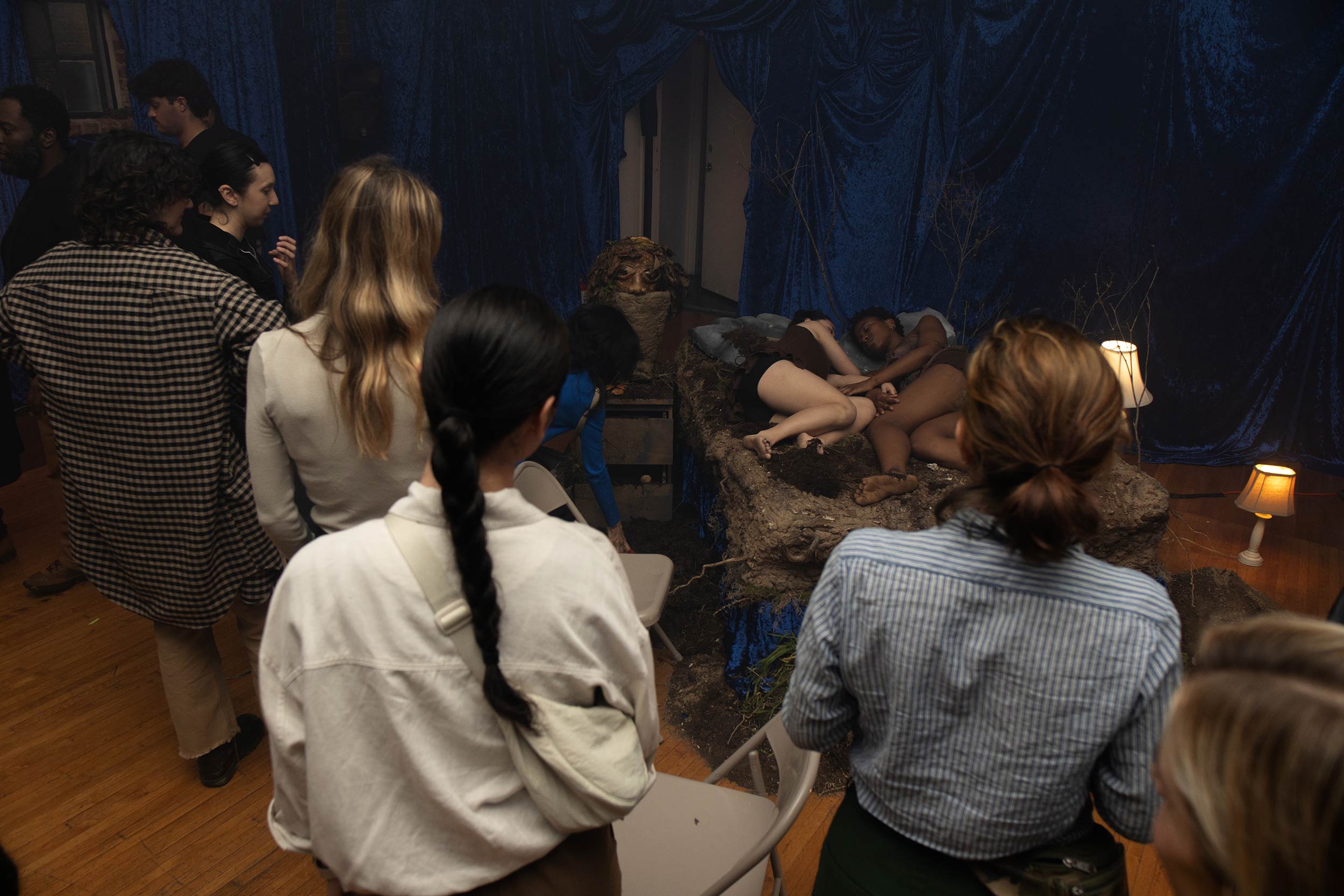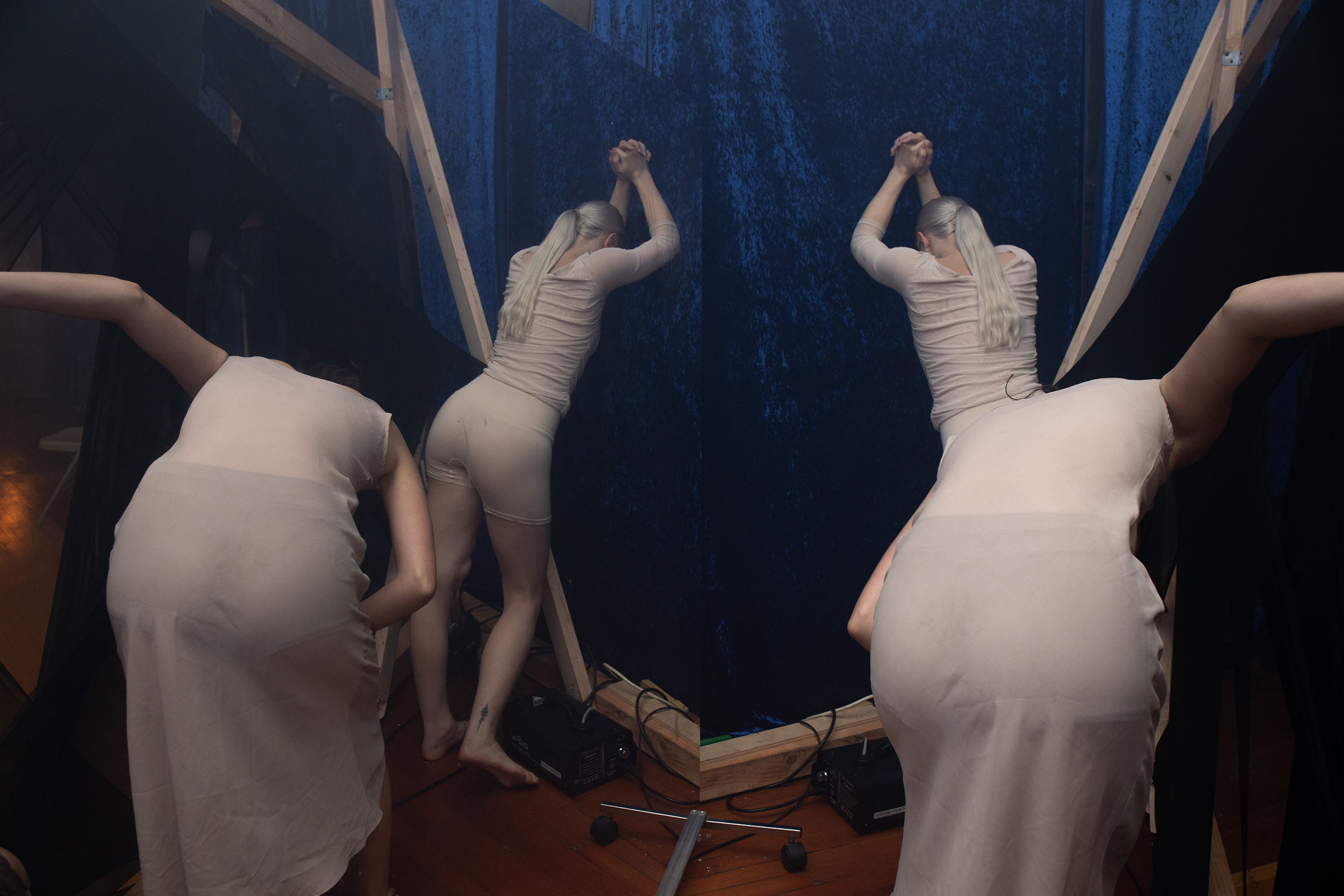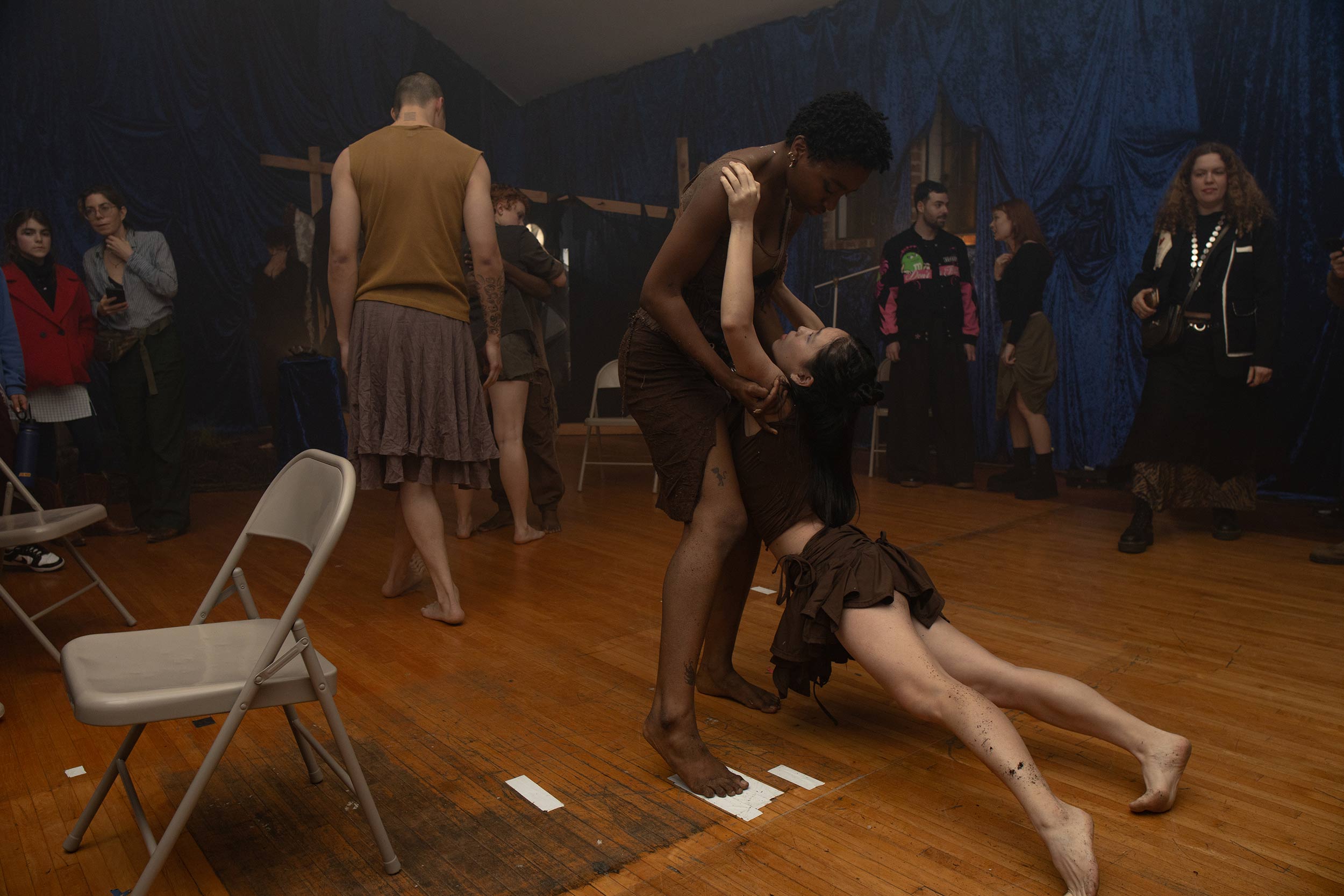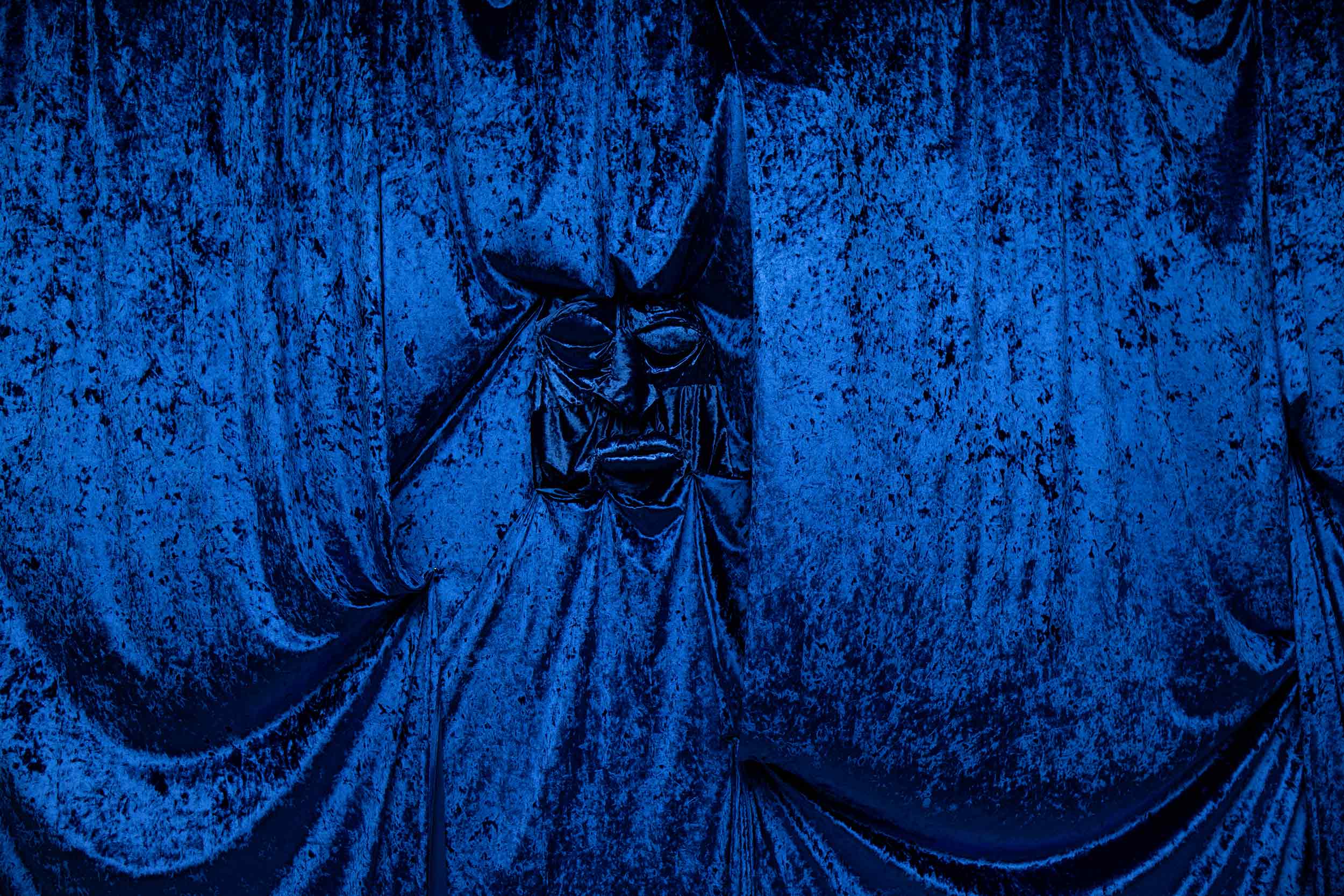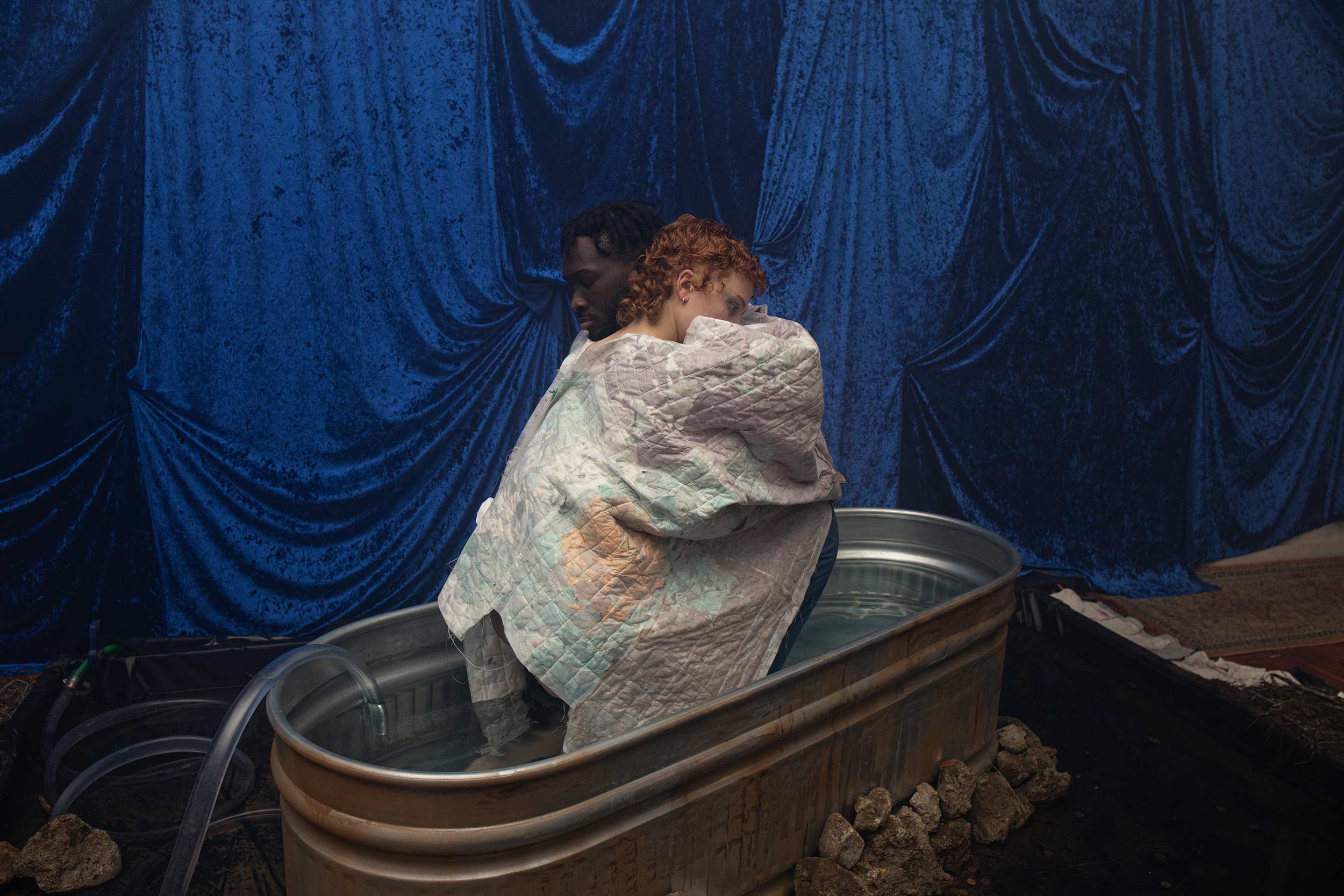In the artist and dancer’s latest performance piece, LA is a vortex, the stage a home, and the audience her kin
In her great book The End of the Novel of Love, critic Vivian Gornick rereads D.H. Lawrence’s Sons and Lovers. She proposes a more modern form of the familiar filial psychodrama than that between a son and his mother and a son and his father. Gornick’s idea is that the mother-daughter framework offers a much more compelling and indeed realistic account of a self that splits when faced with the agonies of love. Many of the most memorable mothers in twentieth century literature act as checks restraining their daughters, denying them the freedom they themselves were denied. Yet the ultimate mother that the daughter character has to struggle against, Gornick writes, is “the mother within,” the one “who’s doing all the damage”, the voice in every daughter that says her duty is to become a mother. Where the sons of modern novels burst the bonds of traditional family dynamics, the daughter cannot escape these bonds because they are inside her.
Artist and choreographer Mamie Green’s Glass House—a dance-theater performance that took place once per evening across the four days of the Frieze Art Fair in Los Angeles—renders these oppressive links pliable with the heat of frantic choreography. Multiple dancers shrink into tight patterns and then disperse across the theater with abstractly improvisational movements. At times they execute synchronized head-nods and shoulder-sways, like one organism continuously altering its shape while remaining somehow the same.
Glass House is also very funny. In a script co-written by Zoey Greenwald and Samuel Loren, the latter of whom curates the flashy yet serious reading series Casual Encountersz, its narrative deals with a “sugar baby” in LA returning to Daddy and possibly Mommy (it’s not clear how absent she is) for the holidays. Though written for a female character, the dialogue-based score is performed by a male one, generating the piece’s first important slippage: Where is the person saying these things? The intentionally nameless protagonist—played by Jance Enslin—says the words alone in a tone equal parts deadpan and fragile as dancers slither around his isolated body, seducing him into what the script calls the “vortex” of LA. The city is pitched as the kind of place where actors leap from bed to bed and partner to partner, a kind of anti-home that is also a double of it.
Both LA and the character’s home are described as vortexes at different moments. “I see Los Angeles’s great potential for triggering the vortex that can be controlled only by avoiding Mommy and Daddy,” Enslin says, but of course the plot of the performance (or the play inside the performance) is that the character doesn’t avoid Mommy or Daddy. The first words of the performance are, “Daddy invited me home.” The vortex is triggered. “I am in the vortex. Home!” he later acknowledges. “I pace around this room, the bed a sacrifice, and an altar.” The bed in question is large, made of dirt, and placed in the corner of the stage, which is not a stage so much as just part of the floor which the performers share with the seated viewers.
The audience is probably in the vortex too, along with director and choreographer Mamie Green. “This piece came out of an idea of Carl Jung’s,” says Green. Though rarely the physical center amid the eight other dancers, her profoundly immobile face is a contrast to the plasticity of her limbs, giving out its own unmistakable spotlight. She looks like a sculpture that though extremely kinetic otherwise, is inert from the neck up. “This is the idea of the dream house,” she says. “‘Everyone has their own home internally,’ Jung says. These homes are built out of our stories, which in turn are built out of our life experiences, the upper stories of the house being consciousness, and so on down into the basement. But I didn’t want it to just be my house,” Green says. “I always do these large-scale performances because I want to figure something out, and I want the other performers to figure it out with me, and I want the audience to figure it out with us. I want them to care, I want them to be involved. Then I can feel less alone.”
How do we build this house with her? The performance includes a score composed by the frighteningly talented ambient saxophonist Patrick Shiroishi. The sound is so subtle that it forces itself away from the audience’s attention, like an image that begins to blur when focused on for too long. Enslin recites lines that seem to mock Glass House’s tragic sugar-baby hero, until one realizes that the comic use of suburban-sadness tropes (“The sunken living room where Mommy reads in the Eames chair while Daddy and I pretend to watch movies. Daddy winks at me. Mommy icy”) is meant to evade the recognition of a trauma by making it almost farcical. And yet that the music eludes one’s attention seems intentional: as if to say that you can either focus on the movement and the music or the music and the words, but not all at once.
Though there is a participatory element at the start of the performance (the audience was encouraged to touch, interact with, and even desecrate the interestingly violent sculptures by Gbenga Komolafe at the theater’s entrance) the real participation comes from the stillness of spectatorship. The audience tries to deduce how the choreography performs the script and how the script enacts the score. Their participation requires them to make meaning as they the dancers do the same, that is, acrobatically.
That these parts cannot be assembled into a whole is not a failure of the art or the audience—it’s a failure within consciousness itself, which cannot build the house it nonetheless inhabits, or is, Glass House suggests. The mother who does damage lives within us, as Gornick writes.
This point is where the audience member’s psyche touches Green’s, and touches the other performers—in the gaps and asynchronies between the mediums and textures that meet in Glass House. Green began creating works like these, merging dance, performance, and sculpture during the pandemic shutdown. “I went out in LA and filmed myself in places,” she told me. “In a parking lot, by a trash can–because I couldn’t do that in a studio really.”
Green makes herself into the unchanging center of her collective, while de-centering herself in its name. Volta Collective—another name for Green’s group performance ventures that feature a changing cast of collaborators—fuses the physical and the theatrical with multiple disciplines and art forms. Though it is called a collective, Green herself is the one constant in the we of a troupe like this, recruiting individual performers and artists according to the needs of each piece. “Volta performed in a black box theater, at a perfume institute, and now we’re doing Glass House at G-Son, a former recording studio. Dance can feel very inaccessible, so I’m trying to break out of the proscenium stage into other contexts. This is a performance but it’s also a world we’re building.” G-Son is the recording studio where the Beastie Boys recorded their boundary-breaking music of the early ’90s, which brought together funk, jazz, stoner rock, and hip-hop. Now used as a performance space, its 1700-square foot main room is ideal for work that requires its creators to ask, ‘Are we allowed to do this?’, to which the answer is always yes.
Last year, Green’s SALT, an adaptation of Euripides’s tragedy Medea was mentioned in Fjord Review’s Best of Dance 2023 write-up. According to Green, she couldn’t do work like this outside of LA, which is another texture tangible in the scale of her performances. It would be hard for Volta to experiment in a place as space-starved and money-hungry as New York. “New York City is obviously the center of the arts in so many ways. And London, Paris, Berlin. But from my perspective, LA is a very exciting place to be an artist. There’s less infrastructure and support here, yes. Yet there’s more room physically. There’s more of a sprawl.”
“Does the weight of the script hang on the character’s fall into LA, the ‘vortex’? Or does everything hinge on the contours of family trauma? What matters more, return or escape; the family bond or its willful shattering?”
The late Mike Davis wrote about this in City of Quartz, a book that addresses LA’s varied history of “sprawl.” He criticized “the conversion of the tract lot—the basic input of Los Angeles’s major ‘mass production’ industry—into a luxury good affordable only by a shrinking minority of local residents,” and “the rise of a new economic geometry that is turning Los Angeles’s old suburban belts into ‘outer cities’ in their own right.” Between aeronautics and real-estate, the business of LA, outside of film, is space. The continuous development and redevelopment of the city itself and the region make Southern California’s economics of land very clear. In this sense Green’s Glass House is particularly attuned to place, thematizing the fiscal factor that permits this city to exist in its current form—the infinite production of homes.
The abstraction of the script’s “Mommy and Daddy,” and even the substance of its dramatic events, invite the audience to provide their own interpretation of what happens and how. And that interpretation reflects their own preoccupations. Does the weight of the script hang on the character’s fall into LA, the “vortex”? Or does everything hinge on the contours of family trauma? What matters more, return or escape; the family bond or its willful shattering? This is what Green means by asking the audience to “figure it out with us.” In contrast to the infinite production of homes, Green wants us to join her in creating just one home in a potentially infinite number of ways.
Then there is the dancing, full of freeform modern contortions and tricks with folding chairs; performers carrying each other on their backs in ways that are either supportive or oppressive; even an erotic club breakdown to Nicki Minaj’s seminal “Boss Ass Bitch.” Toward the middle of the performance Enslin lies on the dirt-bed and describes the times Mommy tried to kill him (or her) which include drowning and a poisoned breakfast. These accounts are so grotesque they become funny. And then there’s the feeling that the narrator is exaggerating what happened with the hope of escaping Mommy, depicting her as an unambiguous antagonist. These accounts are hiding something unnameable that is deeply unfunny. It isn’t tragic either, but something modern that makes undeniable emotions and provocative ideas out of ambiguity, strangeness, and abstraction.
As Enslin says his lines about poison and drowning the dancers sit in two rows of chairs, facing the plump-looking dirt-bed, as if mourners at a funeral. They stay still for a little, listening. Then they get up and start dancing, climbing on the chairs, rearranging them, churning in a cyclonic motion that suggests the only way to defeat the vortex is to become it. Likewise, Glass House proposes, along with Vivian Gornick, that the truly contemporary conception of family is that there is no way to escape it, that today’s Stephen Daedalus who leaves home to become an artist and intellectual flees nothing at all. No matter where you go Mommy and Daddy are inside you, tempting you to return. The result is a split self—in this case articulated by the music, movement, and words that try to form a single and rounded work. It is in the intervals between them that Mamie Green, her collaborators, and her audience create meaning, a kind of new and temporary family.


